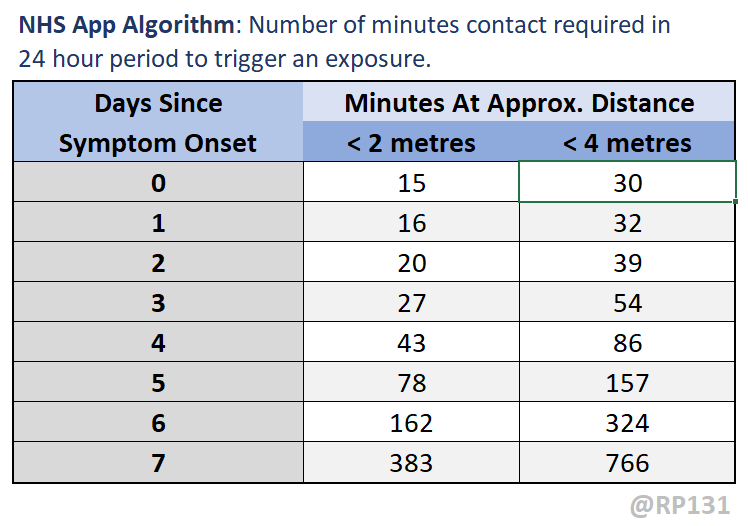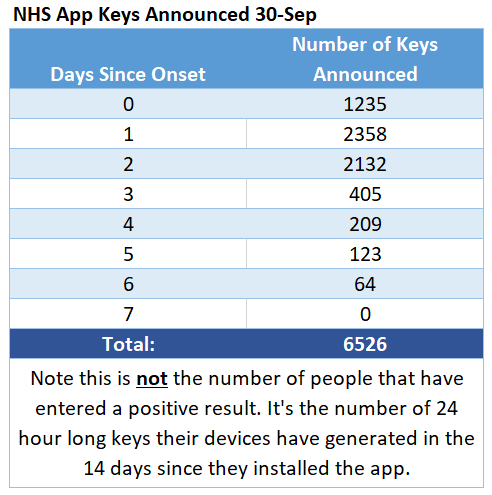I didn& #39;t realise quite how long you needed to spend near someone for the NHS app to trigger. This is not an official table, but pretty sure it& #39;s right. It& #39;s also dependent on the number of days since the person got symptoms. It can be a combination of both distances too.
For example, if you were on a bus within 4 approx. metres of someone whose symptoms started 2 days ago then you& #39;d need to be near them for 39 minutes in order to later get an alert when they report their positive test result through their phone.
So it& #39;s more "sat at the table near them in a restaurant" than "stood in behind them in queue at supermarket". Is this common knowledge or do some people think it& #39;s tracking every single person they walk past in the street?
Interestingly, NHS has decided to override the Google/Apple approach and write their own risk score system. The phone tells the app it thinks there might be an exposure but then the NHS code makes its own assessment. I think this is why people are getting spurious notifications.
Even more techie now, but we can actually see the "days since onset" in the data. Here& #39;s a breakdown of the 6526 keys announced yesterday:
It& #39;s difficult to infer "number of people" from this data. Maybe if we said the average user has had the app installed for 5 days then this represents about 1300 people inputting a positive yesterday? More of an illustration than an estimate!

 Read on Twitter
Read on Twitter



